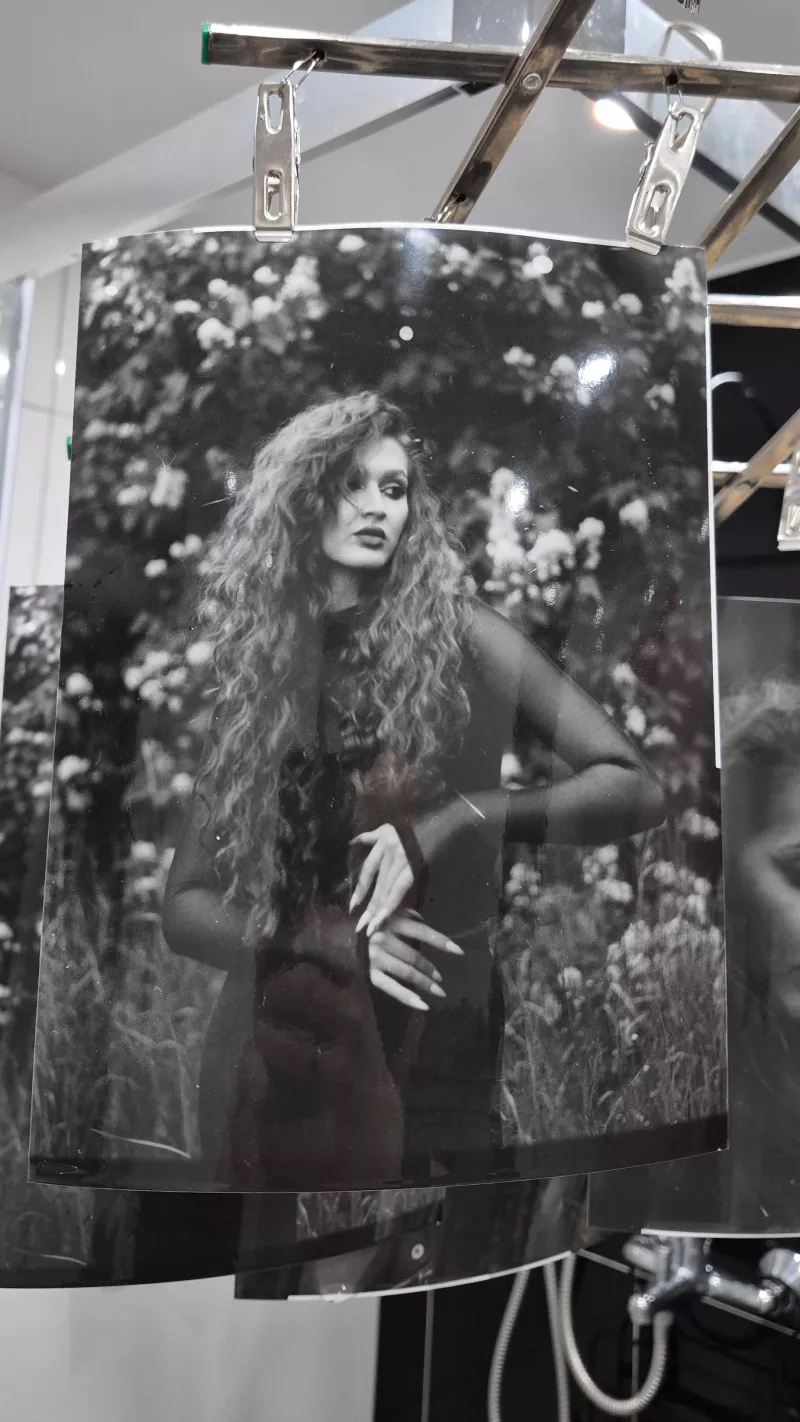Photo session in Racibórz – Sofiia in medium format
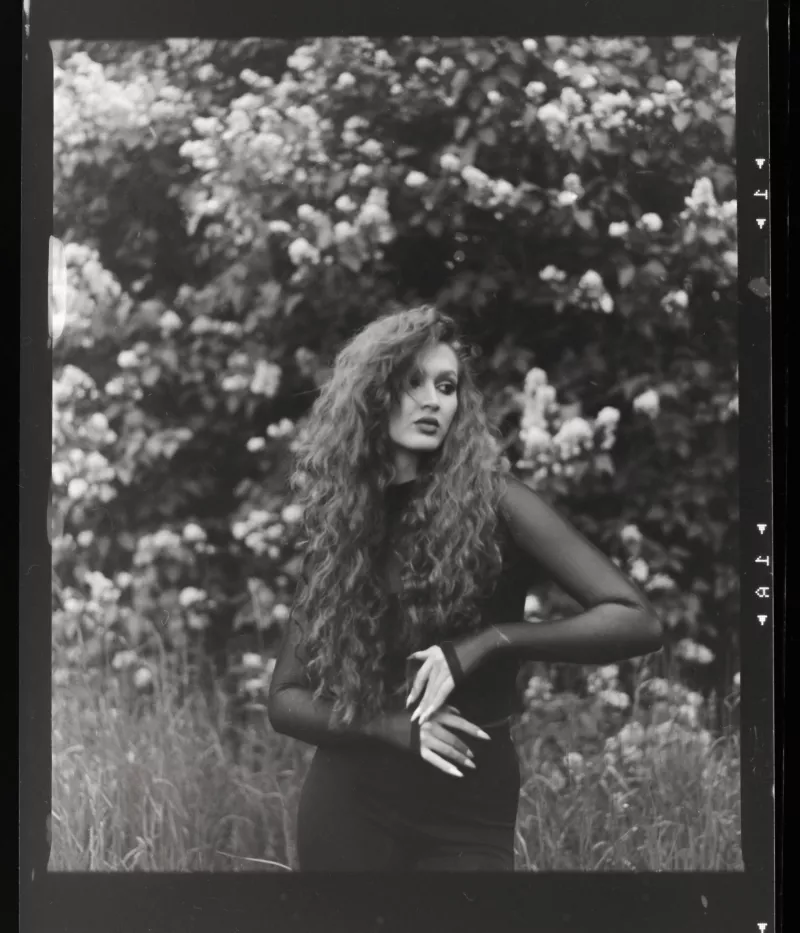
Under Racibórz, in the quiet and unassuming village of Samborowice, time seems to flow differently. It is there, among the abandoned buildings of a former farm, that nature reclaims its rights, and light plays with the ruins in a way that for a photographer is like a whisper of inspiration. Thanks to the kindness of one of the residents, we were able to step into this place and create images that tell more than just the story of the model and the photographer. It was a session that began in digital plans and ended with an analog tale.
The original goal of the photo session in Racibórz was digital photography focused on the play of color and light. But life – as it does – wrote a different script. From my pocket, I pulled out my new companion – a classic Mamiya RB67. It's a camera that doesn't forgive haste but rewards attentiveness and sensitivity in return. In my hand, I felt the weight not only of metal and glass but of the entire history of analog photography, its slowness, precision, and deep focus.
In the shadow of the sprawling shrub – perhaps it was a lilac bush (maybe) – we stopped time. The black and white film did not seek color, but rather the soul. The light softly fell on Sofia's face, and the background – unplanned, somewhat accidental – became just a frame for her presence. This is the magic of medium format photography: a breath of simplicity that embodies elegance and expressive power.
Sofia is a model of the kind who understands the language of the camera. She knows when to remain still and when to let emotions flicker across her face like shadows of clouds over a meadow. My role? Measuring the light, setting the frame, checking every detail. The rest was a natural, quiet symphony – a dialogue between light, form, and intuition.
It was a short session – a prelude to the photos that were to be taken later. Yet the result exceeded expectations. These are the very analog shots I decided to show you today.
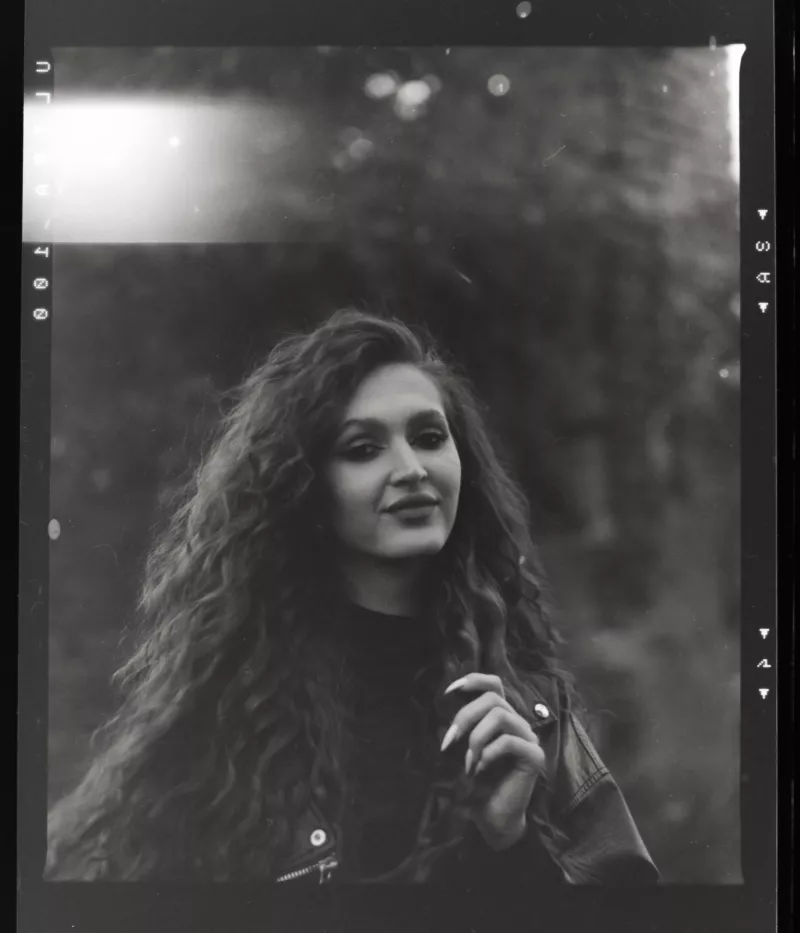
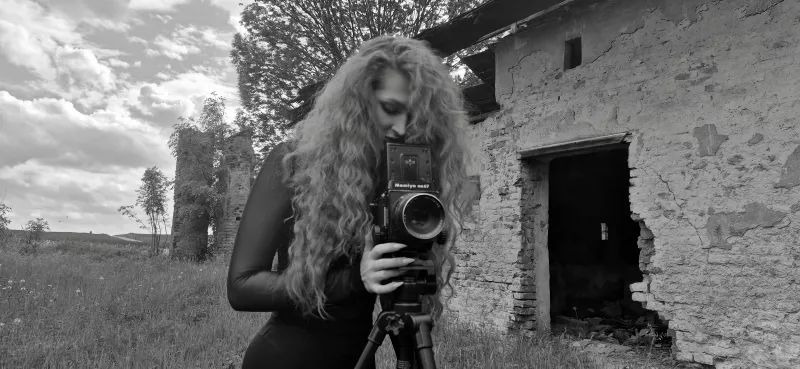
Mamiya RB67 - action!
This photographic adventure gave us more than just frames — it became a pretext for conversation, a calm moment to “catch up” socially. After all, it had been nearly half a year since our last session together. We had time to exchange that simple yet much-needed “how have you been?” and, in doing so, to reconnect and sync up as a team. There was also space to truly feel the place — to understand how it breathes, how it settles underfoot, how it resonates with our mood.
The digital photos carried their own weight — studio lighting, defined aesthetic assumptions. The analog frames, on the other hand, were created solely in available light, which made their creation feel far more fleeting and organic. The sequence was intentional — first the silence and slowness of film, then the intensity of digital light. I knew I had to get at least a few analog shots in this place. I wanted something I could later pull from the light-tight canister and slowly uncover in the darkroom. This place, this moment, and my new camera — everything was saying “now.” Too much was speaking in favor to hesitate.
On the left, a short film showing Sofiia through the viewfinder of the camera.
Developing medium format film
Sometimes I'm asked about the technical details, so for those interested — a few words on how these frames were created. I used Fomapan 100 film, which I developed in Acurol N. Ten minutes at a temperature of 20°C, with a tolerance by eye — within half a degree. The initial 30 seconds of gentle swirling with the tank, followed by one agitation per minute. The process was as usual, rhythmic, almost meditative. To stop the development, I used an acetic acid stop bath, and the whole process was completed with Ilford's classic Rapid Fixer. Due to the soft water, I didn't add any detergent — it wasn't necessary. The water in my case doesn't leave marks, which allows me to trust the simplicity of the process even more.
This time, however, I faced an unpleasant surprise...
After the session itself, I returned home, but what was supposed to be a simple return journey turned into the beginning of a technical adventure. I brought back five rolls of film from my trip to Poland, but it quickly became apparent that all those with ISO 200 were expired. The emulsion on them was damaged, which manifested as a characteristic phenomenon known as “ghosting,” or imprints on the film. This effect, although interesting in certain contexts, did not fit my intentions. Fortunately, the session we conducted was recorded on a roll with ISO 100, factory new and free from this defect.
A word of caution for the future — keep your films in the fridge. In the case of medium format and black-and-white frames, expiration has a huge impact on visual quality. It's not at all the same as the popular lomo effects or small-format color adventures. After developing the photos, I was relieved to discover that the entire roll dedicated to Sofia was fine. Initially, I didn't even analyze the photos in detail, because my attention was focused on the damaged ones. However, I took one picture with my phone to let her know that the film turned out well — although it was supposed to be just a bonus shot, it turned out to be an invaluable element of the entire session.
Even though I initially didn't plan for it, after developing the photos I couldn't resist the feeling that they needed to go to the darkroom. It was a decision that came quite spontaneously, but with each passing minute, I was convinced that these images deserved to be enlarged. Although the subject I chose isn't typically what I feel most comfortable with — I'm more drawn to shadows, subtle details, minimalism — these photos had something that caught the eye and evoked emotions. Their atmosphere, though not entirely mine, turned out to be strong enough that I began to see something special in them. It was a moment when they became more than just a technical trial, an experiment, or another project. They began to live their own life.
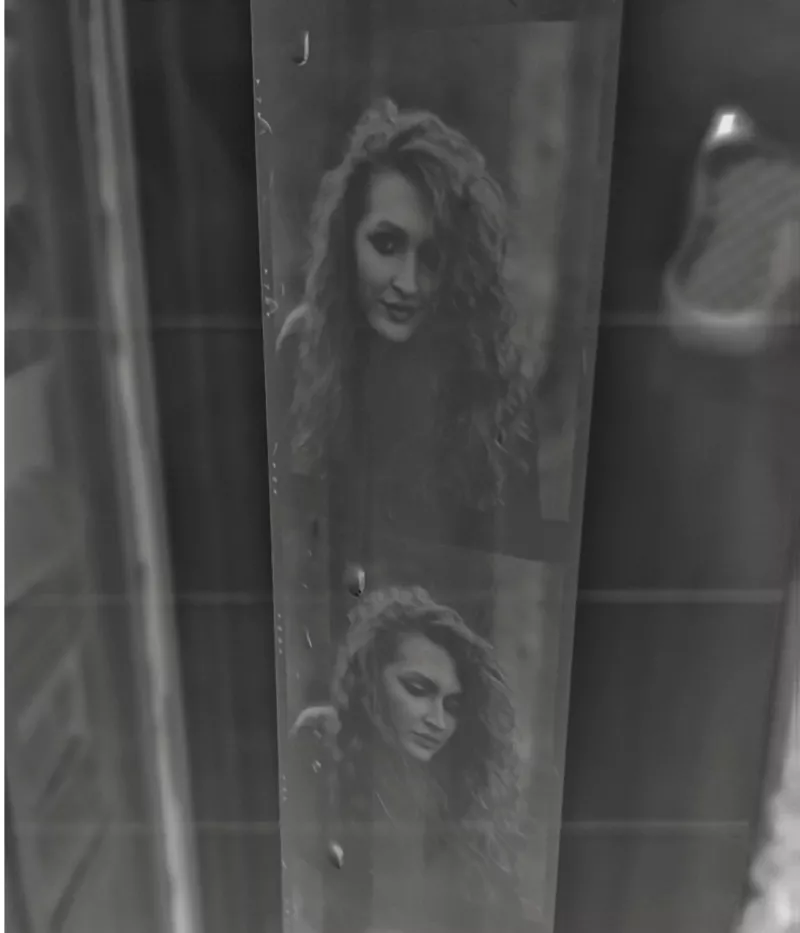
Impressions
There is an unrestrained naturalness in them, something that's hard to fully capture digitally – that honesty of emotion that is neither contrived nor feigned. These photos capture moments that are full of joy, that simply happen, not forced. You can see it in every shot. On Sofia's face, both her personality and the atmosphere around her are reflected. They were full of "good emojis," as if each photo carried some positive energy that radiated directly to me, to the camera, and to the film.
And although I'm not sure if such images should be my main creative stream, I couldn't ignore how well they turned out on paper. When I viewed them under a magnifying glass, each frame started to tell its own story, becoming part of a larger whole. There was something magical about it – how an analog image could convey not just the picture, but also the feelings that accompanied that session. And even though it may not be my favorite subject, these photos certainly deserve attention, a moment to pause and reflect on their simple yet warm nature.
This post will get an update when I order new materials for the darkroom, a busy night awaits me under the glow of a red bulb and the scent of chemicals, which I compare to the smell of an old book. It will be a tiring but beautiful night.
